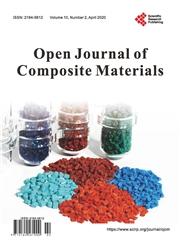On the s±-Wave Superconductivity in the Iron-Based Superconductors: A Perspective Based on a Detailed Study of Ba0.6K0.4Fe2As2 via the Generalized-Bardeen-Cooper-Schrieffer Equations Incorporating Fermi Energy
引用次数: 6
Abstract
Guided by the belief that Fermi energy EF (equivalently, chemical potential μ) plays a pivotal role in determining the properties of superconductors (SCs), we have recently derived μ-incorporated Generalized-Bardeen-Cooper-Schrieffer equations (GBCSEs) for the gaps (Δs) and critical temperatures (Tcs) of both elemental and composite SCs. The μ-dependent interaction parameters consistent with the values of Δs and Tcs of any of these SCs were shown to lead to expressions for the effective mass of electrons (m*) and their number density (ns), critical velocity (v0), and the critical current density j0 at T = 0 in terms of the following five parameters: Debye temperature, EF, a dimensionless construct y, the specific heat constant, and the gram-atomic volume. We could then fix the value of μ in any SC by appealing to the experimental value of its j0 and calculate the other parameters. This approach was followed for a variety of SCs—elemental, MgB2 and cuprates and, with a more accurate equation to determine y, for Nitrogen Nitride (NbN). Employing the framework given for NbN, we present here a detailed study of Ba0.6K0.4Fe2As2 (BaAs). Some of the main attributes of this SC are: it is characterized by -wave superconductivity and multiple gaps between 0 - 12 meV; its Tc ~ 37 K, but the maximum Tc of SCs in its class can exceed 50 K; EF/kTc = 4.4 (k = Boltzmann constant), and its Tc plotted against a tuning variable has a dome-like structure. After drawing attention to the fact that the -wave is an inbuilt feature of GBCSEs, we give a quantitative account of its several other features, which include the values of m*, ns, vo, and coherence length. Finally, we also deal with the issue of the stage BaAs occupies in the BCS-Bose-Einstein Condensation crossover.铁基超导体中s±波超导性的研究——基于含费米能的广义Bardeen-Cooper-Schrieffer方程对Ba0.6K0.4Fe2As2的详细研究
基于费米能量EF(相当于化学势μ)在决定超导体(SC)性质中起着关键作用的信念,我们最近导出了元素和复合超导体的间隙(Δs)和临界温度(Tcs)的包含μ的广义Bardeen-Cooper-Schrieffer方程(GBCSEs)。μ相关的相互作用参数与这些SC中任何一个的Δs和Tcs值一致,可以根据以下五个参数得出T=0时电子的有效质量(m*)及其数密度(ns)、临界速度(v0)和临界电流密度j0的表达式:德拜温度、EF、无量纲结构y、比热常数,以及克原子体积。然后,我们可以通过引用其j0的实验值来固定任何SC中μ的值,并计算其他参数。对于各种SC——元素、MgB2和铜酸盐——采用了这种方法,对于氮化氮(NbN),采用了更准确的方程来确定y。利用NbN的框架,我们对Ba0.6K0.4Fe2As2(BaAs)进行了详细的研究。这种SC的一些主要特性是:它具有-波超导性和0-12meV之间的多个间隙;其Tc~35K,但该类SC的最大Tc可超过50K;EF/kTc=4.4(k=玻尔兹曼常数),并且其相对于调谐变量绘制的Tc具有圆顶状结构。在注意到-波是GBCSEs的固有特征这一事实之后,我们对其其他几个特征进行了定量说明,这些特征包括m*、ns、vo和相干长度的值。最后,我们还讨论了BaAs在BCS玻色-爱因斯坦凝聚交叉中所占的阶段问题。
本文章由计算机程序翻译,如有差异,请以英文原文为准。
求助全文
约1分钟内获得全文
求助全文

 求助内容:
求助内容: 应助结果提醒方式:
应助结果提醒方式:


